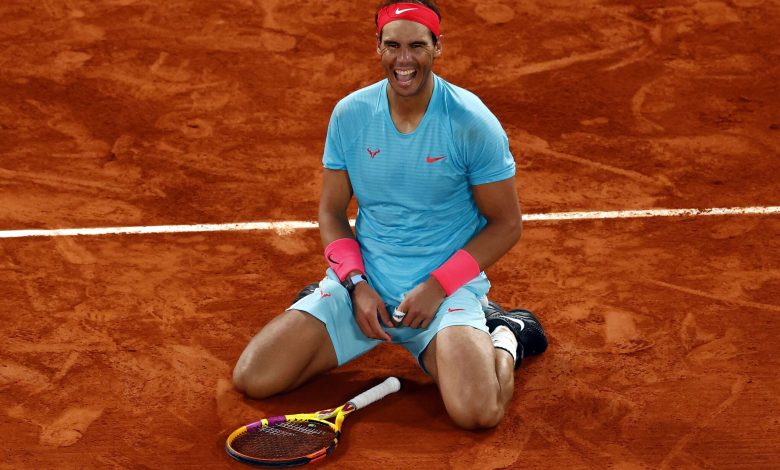From Clay to Fame: Tracing the Evolution and Iconic Moments of the French Open Tennis Championship

From its humble beginnings on the dusty clay courts of Paris, the French Open Tennis Championship has evolved into one of the most prestigious and iconic tournaments in the world. Since its inception in 1891, the tournament has witnessed countless memorable moments and legendary champions that have left an indelible mark on the sport of tennis.
The French Open has become synonymous with intense battles, breathtaking shot-making, and unforgettable drama. It is the only Grand Slam tournament played on clay, a surface known for its unique challenges and slower pace. This distinctive characteristic not only attracts the best clay court specialists but also sets the stage for breathtaking rallies and spectacular upsets.
The Origins of the French Open
The French Open, originally known as the “Championnat de France,” was first held in 1891. It was initially open only to members of French tennis clubs and was played on a grass court. The tournament quickly gained popularity and saw participation from international players.
In 1928, the French Open transitioned from grass to clay courts, a decision that would forever change the tournament’s identity. The decision to switch to clay was made to provide a more suitable surface for French players, who traditionally excelled on slower courts. This change also aligned the French Open with the other major tournaments, which were also played on different surfaces.
Evolution of the French Open from Clay Courts to Modern Standards
Over the years, the French Open has gone through several significant changes and improvements. The tournament expanded its venue, moving from the Racing Club de France to the Stade Roland Garros in 1928, where it remains to this day. The move to a larger venue allowed for more spectators and enhanced the tournament’s global appeal.
In 1968, the French Open became the first Grand Slam tournament to allow professional players to compete. This decision marked a pivotal moment in the sport of tennis, leading to the formation of the Open Era, where professionals and amateurs could compete together. The inclusion of professional players elevated the level of competition at the French Open, attracting some of the greatest players in tennis history.
Iconic Moments in French Open History
Throughout its history, the French Open has been witness to numerous iconic moments that have captivated tennis fans around the world. One of the most memorable and enduring moments came in 1984 when Chris Evert and Martina Navratilova faced off in the women’s singles final. The match showcased the contrasting styles of the two players, with Evert’s steady baseline game pitted against Navratilova’s aggressive net play. In a thrilling three-set battle, Navratilova emerged victorious, capturing her first and only French Open singles title.
Another iconic moment in French Open history occurred in 1989 when Michael Chang, an unseeded teenager from the United States, defeated the reigning champion Ivan Lendl in an epic five-set match. Chang’s victory made him the youngest male player to win a Grand Slam title at the time and showcased his incredible mental and physical resilience.
Memorable Matches and Rivalries at the French Open
The French Open has been the stage for numerous historic matches and intense rivalries. One of the most storied rivalries in tennis history is the battle between Rafael Nadal and Roger Federer. These two legends have faced each other multiple times at the French Open, producing some of the most electrifying and dramatic matches in recent memory.
Their first meeting at the French Open came in the 2005 semifinals, where Nadal defeated Federer in four sets. This match marked the beginning of a rivalry that would go on to define an era in tennis. Nadal and Federer have since faced each other in three more French Open finals, with Nadal emerging victorious on all occasions. Their battles on the clay courts of Roland Garros have showcased their contrasting styles and relentless determination.
Impact of the French Open on Tennis and French Culture
Beyond its sporting significance, the French Open has had a profound impact on both the sport of tennis and French culture. The tournament has played a crucial role in popularizing clay court tennis and shaping the careers of many great players. The slow and demanding nature of clay court tennis has produced a unique style of play, emphasizing patience, endurance, and tactical acumen.
The French Open has also become an integral part of French culture, attracting visitors from around the world and showcasing the rich history and beauty of the city during their Paris vacation. The tournament’s vibrant atmosphere, with its red clay courts, iconic stadium, and passionate fans, contributes to the allure of the French Open and makes it a must-visit event for tennis enthusiasts and tourists alike.
Behind the Scenes: Organizing the French Open
Organizing a Grand Slam tournament of the magnitude of the French Open is a massive undertaking that requires meticulous planning and coordination. From the logistics of accommodating players, officials, and spectators to ensuring the smooth operation of matches, the organizers of the French Open work tirelessly to deliver a world-class event.
The maintenance of the clay courts themselves is a painstaking process. The clay surface requires daily maintenance, including watering, rolling, and brushing, to ensure optimal playing conditions. The team responsible for the courts must monitor weather conditions and make adjustments to ensure consistency throughout the tournament.
Notable French Open Champions and Records
The French Open has seen numerous legendary champions etch their names into tennis history. One name that stands out above all is Rafael Nadal. The Spanish superstar has become synonymous with clay court dominance, amassing a record-breaking 13 French Open titles. Nadal’s unparalleled success on the clay courts of Roland Garros has cemented his status as one of the greatest players of all time.
Other notable champions include Bjorn Borg, who won the French Open six times between 1974 and 1981, and Chris Evert, who claimed a record seven French Open singles titles. These champions, along with many others, have left an indelible mark on the tournament and have become part of its rich history.
The French Open Today: Key Features and Innovations
The French Open continues to evolve and innovate to provide an unforgettable experience for players and fans alike. In recent years, the tournament has introduced various initiatives to enhance the spectator experience, including the implementation of a retractable roof over the main court, Philippe Chatrier. This addition ensures that matches can continue uninterrupted, regardless of weather conditions.
Furthermore, the French Open has embraced technology by introducing electronic line-calling systems on its main courts. This innovation has minimized human error and provided more accurate and efficient officiating during matches.
Conclusion: The Enduring Legacy of the French Open
From its humble beginnings as a grass court tournament to its current status as one of the most iconic events in tennis, the French Open has come a long way. The tournament’s transition to clay courts, the countless memorable moments, the rivalries, and the legendary champions have all contributed to its enduring legacy.
As tennis fans scramble to find Europe travel deals and eagerly await each year’s French Open, they know they are in for a treat – a showcase of skill, athleticism, and drama on the unique red clay courts of Roland Garros. The French Open’s rich history, combined with its ability to adapt and innovate, ensures that it will continue to captivate audiences for generations to come.




